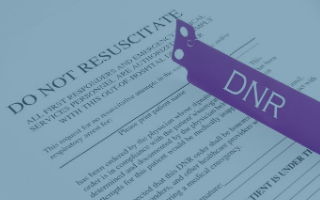DNR/DNI stands for “Do Not Resuscitate/Do Not Intubate.” An individual’s wishes for DNR/DNI orders can be written in a Health Care Directive, a POLST form (Physicians Orders for Life Sustaining Treatment), or on a DNR/DNI order. If a patient chooses DNR, it means that in the event of cardiac arrest, medical staff will refrain from performing CPR. Similarly, DNI means that if breathing ceases, the doctor will not insert a breathing tube to provide oxygen. DNR/DNI orders can be tailored to personal preferences and wishes for acute and/or end of life care.
In Minnesota, paramedics responding to an emergency are required to attempt resuscitation unless a DNR/DNI order is present. Commonly individuals with chronic conditions or extreme frailty keep such orders on their refrigerator or have bracelets or necklaces indicating the existence of a DNR/DNI (called medical alerts or ID’s). For the DNR/DNI to be effective, a doctor must sign it. This means that a tattoo above your heart reading “do not resuscitate” is not enough! To obtain a DNR/DNI, either you or your health care agent must communicate with a health care professional.

Various reasons exist for considering a DNR/DNI order. Most commonly, such orders are put in place when a person is in the hospital or an assisted living facility. Individuals who suffer with chronic pain or other disabilities affecting their quality of life may prioritize a natural death over being revived. When an individual stops breathing on his/her own, the lack of oxygen to the brain can lead to a stroke or permanent brain damage. Electing DNR/DNI allows individuals to avoid potential complications from loss of oxygen and pass away peaceably. A DNR/DNI designation WILL NOT affect the fashion in which doctors apply other treatments and comfort measures, such as pain medication.
If you find yourself in a position where certain medical procedures are not desired, you should speak with your health care provider. Death is a very sensitive and challenging topic, but it is incredibly important to keep your family involved in your thoughts and feelings surrounding death so you do so on your own terms.
